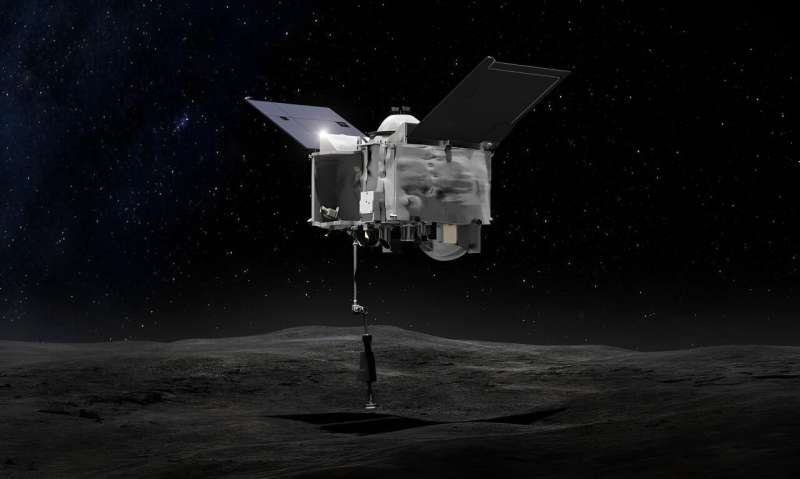This article has been reviewed according to Science X's editorial process and policies. Editors have highlighted the following attributes while ensuring the content's credibility:
fact-checked
trusted source
proofread
How to make asteroid landings safer

Landing safely on an asteroid is no mean feat. Despite several recent successes, there have also been notable failures—most famously, the Philae lander to 67P/Churyumov-Gerasimenko. Admittedly, that was an attempt to land on a comet rather than an asteroid, but those two bodies share many of the same landing hazards.
One of the most prevalent problems is "inhomogenous" gravity. Offering a solution, researchers from the Harbin Institute of Technology in China recently published a paper in Aerospace Science and Technology detailing a framework for performing "soft landings" on asteroids, which might help make exploring these rocky worlds much more accessible.
First, it would be helpful to understand the difference between a "hard" landing on an asteroid and a "soft" landing. A hard landing consists of the spacecraft, either in a controlled or uncontrolled descent, landing with some force on the asteroid's surface. Typically, this causes some amount of damage to both the asteroid and potentially even the lander itself. So far, all successful asteroid landings have been "hard," though some included something akin to a grappling hook that allowed them to attach themselves to the rocky surface and lower themself down.
In contrast, a "soft" landing would have a probe slowly descend to the asteroid's surface, landing on it with little to no impact and causing little to no disturbance in the surroundings. On asteroids, this is relatively inexpensive in terms of fuel, as the gravity, and hence the force needed to hover above them is minuscule on these worlds. However, even that minuscule amount of gravity can make the landings difficult.
That's because gravity varies dramatically based on various physical characteristics of the asteroids, such as their shape, the density or material composition of different parts of the asteroid, and its rotational speed. Trying to come up with an algorithm that can successfully take all of that data as input and calculate a reasonable soft-landing trajectory routine has so far remained out of the reach of our robotic emissaries to these miniature worlds.
Wenyu Feng and their co-authors think they've devised a framework to do so. The beginning part of their paper details previous methods of understanding the "inhomogenous" gravity on potential target asteroids, such as modeling the asteroid as a polyhedron and assigning a different gravitational constant to each face of the polyhedron.
While that might sound like an elegant solution, it is both power-hungry and time-consuming, making using such an algorithm for in-flight adjustments challenging, to say the least. Other models suffer from similar fallibilities, including difficulties modeling the gravitational fields close to the surface of the asteroid or requiring detailed foreknowledge of the mass of the asteroid to calculate a trajectory accurately.
In the paper, the researchers propose an alternative that utilizes a series of advances in artificial intelligence to accurately model the gravitational field based on data collected from various asteroid exploration missions and uses it to model probable gravitational fields on a new target asteroid, all while using the computational power available on the probe itself.
So far, their work has only been theoretical—they haven't tested their model or even some of the underlying data work in a real-world environment. But as the paper is quick to point out, this work is one of dozens popping up in the field of asteroid exploration. Those "hard landing" mission successes have obviously inspired a new general of asteroid explorers.
This new data-driven framework for interacting with them will hopefully lead to more successful interactions between robots and asteroids. It may one day lead to the first-ever soft landing on one of our solar system's myriad small worlds.
More information: Wenyu Feng et al, A Framework of Gravity Field Online Modeling and Trajectory Optimization in Asteroid Soft-Landing Mission Scenarios, Aerospace Science and Technology (2023). DOI: 10.1016/j.ast.2023.108656
Provided by Universe Today





















